Emma Jameson – 12 July, 2014
Soft Intensities is a visual and cognitive exploration of the extent to which materiality can be obtained and perceived in our current social and aesthetic environment. Tim Gentles' working of the gallery space demonstrates the ways in which a relatively small area can be utilised effectively to create a strong statement of conceptual and visual interaction. Through this exhibition, materiality of form and presence is by no means objective or concrete, but is rather subjective and fragile in its malleable status of flux.
Auckland
Rachel de Joode, Jaakko Pallasvuo, Yannick val Gesto
Soft Intensities
Curated by Tim Gentles
19 June - 5 July 2014
Notions of materiality and the extent to which perception of representations can be reliably concrete in an increasingly digitised age are explored in Soft Intensities at Gloria Knight. The expanding digital world has exponentially stratified contemporary society into a multitude of modes in which identity can be performed, forms perceived, and realism constructed. What seems material and concrete can thus become immaterial and fluid and it is in this way that the internet has challenged our perception of space: while seemingly heralding another dimension to our existence, our access to this other world is a passively two dimensional encounter in front of a two dimensional screen. As Tim Gentles states in his exhibition explanatory notes (1), the internet can be seen as a ‘hyper-object’; a concept or object that seems to be constantly present yet simultaneously elusive. Tangibility and intangibility converge, complicating relational interactions and contexts.
This is an exhibition that is simultaneously conceptual and aesthetically pleasing in its positioning of the various media in relational interaction with each other. Rachel de Joode’s Puddle in Pedestal, There stands on a plinth directly opposite Jaakko Pallasvuo’s video The Artist’s Statement, the milky pink tones of her photograph visually complementing the raspberry ripple ice-cream that slowly gets squashed throughout the video loop. The viewer is thus encouraged to read the two in tandem and the immateriality/materiality of one influences and shapes understanding of the other: the gallery becomes a malleable space into which the objects that it possesses too become implicated.
De Joode’s photograph is a site in which material is transformed into the immaterial (and vice versa) in the viewer’s receptive and perceptive gaze. De Joode’s photograph is a close-up of something that is undisclosed: all we see is a blending of pink and white colours behind a glass cover that reflects the gallery’s lights, distorting our understanding even further. Faced with such uncertainty, we are prompted to question what we see in the photographic frame: is it the squished ice cream that we see in the video in the periphery of our gaze? Is it a close-up of a skin rash? Or is it a microscopic view of a bacterial growth? The solidity of the white frame and its tilted positioning seems to underscore the instability of the photographed material, highlighting its abstract and ephemeral inscrutability.
This play between materiality and immateriality is a common feature of de Joode’s works; as stated by the artist, she likes “the idea of turning the sculptural object into surface, then back into sculpture and back into surface.” Such interest in the relation between a two dimensional surface appearance and the three dimensional object stems from de Joode’s conceptual interpretation of the internet as being an experiential space that is simultaneously transcendental, yet essentially flat (in both physical form and in emotional experience). Puddle in Pedestal, There can be seen to be a visual analogy of this: the viewer is presented with a two dimensional screen that showcases the indefinable, unknowable; that which cannot be fully possessed either mentally or physically. What is solid becomes transient, what becomes certain is rendered uncertain, what should be material is made transfixing in its immateriality.
Jaakko Pallasvuo’s video provides an audio-visual accompaniment for this conceptual encounter. The Artist’s Statement is a compilation of artists’ statements taken from Rhizome, a site dedicated to the creation and critique of artistic practices that engage with technologies like the internet. Such statements evidence artistic interest in the immaterial fictions resulting from an increasingly digitised age, which one quote saying that the artist is “interested with the idea of the internet as a space with infinite possibilities of representation and how the current network of the age has changed our personal and professional lives and the way we think about ourselves”. As such, the video can be seen to directly address issues of representation and its construction within the realm of the internet, reflecting Pallasvuo’s own interest in how identities are fictionalised on websites like Facebook. Such interest can be seen in his shower curtain in the far corner of the gallery space, entitled I Was the One Who Told Snoopy About That Mindfulness App, which features text such as “this shower curtain is tumblr” and “you can hide behind this”, alluding to the play of surface materiality/immateriality that occurs in the staging of constructed internet identities. Like the shower curtain, internet identity is a two-dimensional surface that conceals three-dimensional presence.
Yet the reiteration of these critiques within the context of the video and its supplementary visual content raise questions as to Pallasvuo’s view of the substantial materiality of these socio-critical statements. The different artists’ statements are not clearly separated or differentiated and the entire audio component of the video thus feels disjointed, abstract, and something that we cannot fully seem to comprehend. This is compounded by the insertion of excerpts from the transcripts of the Patty Hearst kidnap tapes: the shirtless artist drinking Bourbon in front of refers to his state of captivity and reassures his listeners that he is fine. This has an effect that is two fold: it further diminishes the fluidity and comprehensible materiality of the artist’s statements, and possibly suggests that their socio-criticality is trapping in its narrow evaluation of society. Pallasvuo himself is critical of artistic institutional critique, stating that such opinions are hypocritical in that they are derisive of the binary of ‘institutional’ and ‘outside-institution’ whilst simultaneously reinforcing and participating in this binary.
Cynical criticality is, for Pallasvuo, unproductive and acts as a self-imposed restriction on artistic practice in that for some artists it serves as justification for non-participation in the art world. As such, the artists’ statements referring to the role of institutional ideology in social control are made immaterial through the structure of the video and through the stressing of the materiality/immateriality of the ice cream. The ice-cream is slowly and tantalisingly squished by a disembodied sandal. We see a foot hover over the blocks of raspberry ripple and wait impatiently and expectantly for it to crush the malleable substance beneath it. When this finally does happen, the ice cream’s destruction into an immaterial gloopy substance on the floor provokes a material and corporeal reaction from the viewer. We see close ups of the ice cream squelching through the toes and around the sides of the feet, prompting us to imagine the same happening to us and recoiling in response. With such a strong response to the visual, the audio component of the video almost becomes an out-of-focus aspect that is dematerialised in content and significance. The destruction of the ice cream’s surface appearance of solidity can thus potentially be seen as a visual metaphor for Pallasvuo’s opinion of institutional criticality and the ways in which some artists resort to stock-standard critique of hyper-objects like ‘the internet’ and ‘the institution’.
Through playing with materiality/immateriality, Pallasvuo suggests that such issues are invested with complex conceptual layers that go beyond the surface appearance of critical engagement. The meaning of the phrase “you can hide behind this” in this reading thus takes on a new meaning, especially when read with “this shower curtain is better than yours, both as an artwork and as an object”. Pallasvuo seems to be suggesting immateriality of artistic theoretical engagement, critiquing the conceptual front that is appropriated by artists so as to invest their work with meaning that extends beyond the arbitrarily commercial. Immateriality and materiality is thus explored two fold: the unknowable nature of the ‘hyper-object’ and the depth and value of attempts to orientate this through artistic endeavour.
Yannick Val Gesto’s four prints of the Yu Yu series on the back wall of the gallery present a threateningly garish vision of digitalised presence. Taken from the anime show Hunter x Hunter, the images have been manipulated by the artist to create swirling vortexes of undulating colour that seems to move before the viewer’s eyes. We are here presented with the exaggerated ‘emotion’ and action that can be seen in video games and the extent to which tangible feeling can be expressed and experienced within this genre. Personally, although I responded on a visual level with the vibrant colours and organic forms, these works lacked the subtle conceptual complexity of the de Joode and Pallasvuo. The de Joode and the two Pallasvuo pieces created a trio of conceptual complexity and subtlety that underscored the ways in which the malleable space of the gallery could be worked with (literally and figuratively) so as to communicate beyond the immediately visual. Val Gesto’s prints were an afterthought in my viewing of the other three works, which I engaged with on a visual, corporeal, and mental level.
Soft Intensities is a visual and cognitive exploration of the extent to which materiality can be obtained and perceived in our current social and aesthetic environment. Tim Gentles’ working of the gallery space demonstrates the ways in which a relatively small area can be utilised effectively to create a strong statement of conceptual and visual interaction. Through this exhibition, materiality of form and presence is by no means objective or concrete, but is rather subjective and fragile in its malleable status of flux.
(1) Tim Gentles, Soft Intensities, 2014.
Emma Jameson is the 2014 EyeContact Artists Alliance Writing Intern, a programme made possible with generous funding from the ASB Community Trust.
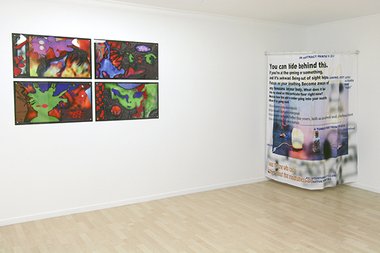

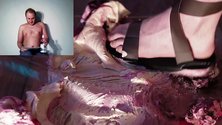

 Two Rooms presents a program of residencies and projects
Two Rooms presents a program of residencies and projects Advertising in this column
Advertising in this column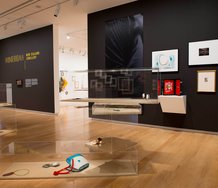

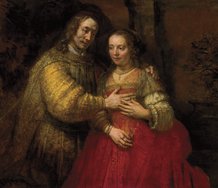
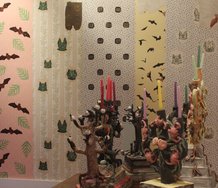
This Discussion has 0 comments.
Comment
Participate
Register to Participate.
Sign in
Sign in to an existing account.